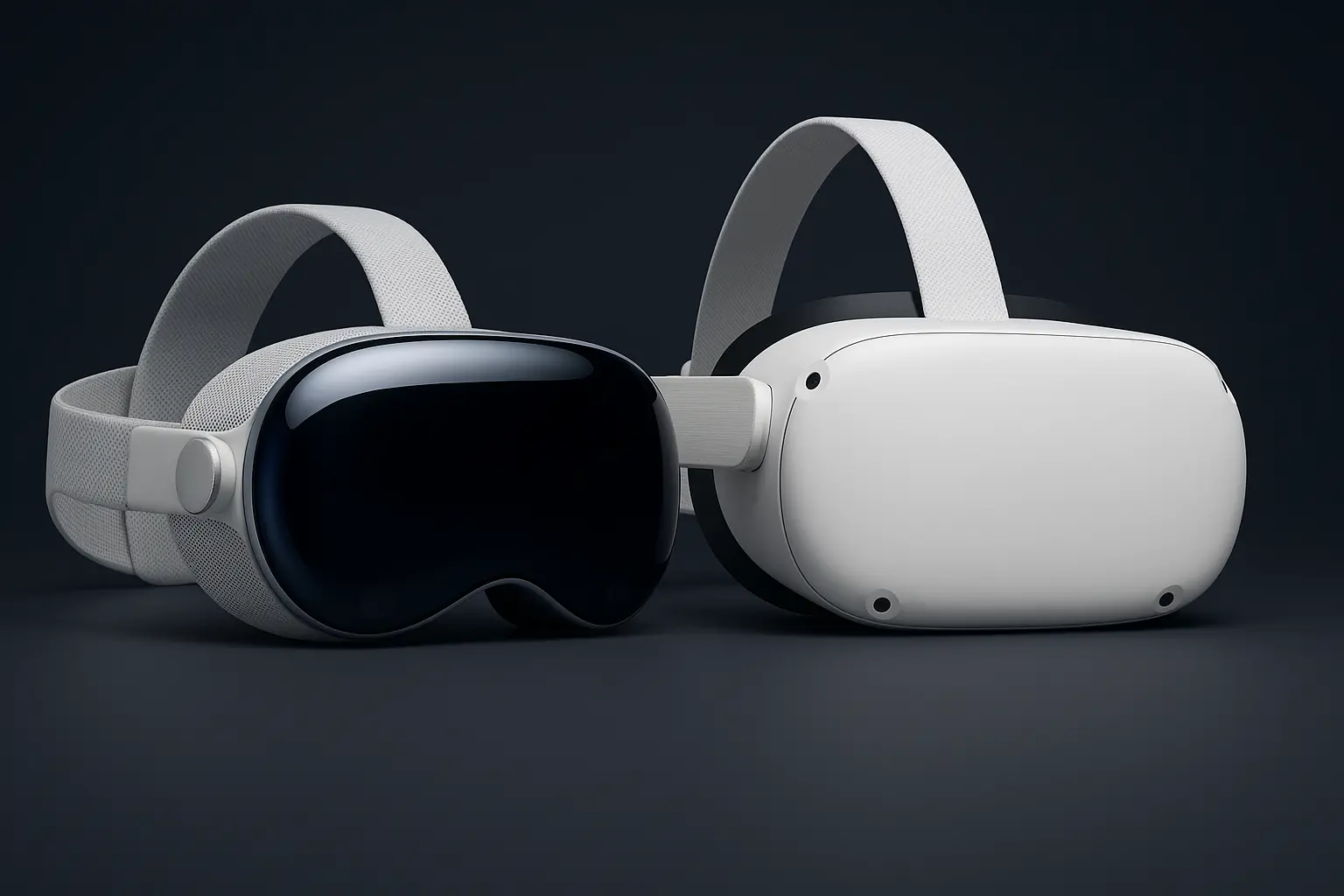The race for dominance in mixed reality has entered a new phase. With Apple’s bold entry into the market through the Vision Pro, and Meta’s steady commitment to accessible VR with the Quest 3, consumers in 2025 now have two very different options for experiencing the future of computing. While both headsets are built on cutting-edge technology, they represent two opposite strategies: Apple aims to build the ultimate premium “spatial computer,” while Meta pushes toward affordable, mass-market adoption. The big question is: which headset truly comes out on top in 2025?
When Apple launched the Vision Pro in 2023, it made headlines as one of the most ambitious products in the company’s history. With a dual 4K micro-OLED display, the M2 chip paired with an R1 coprocessor, and the entirely new visionOS, the device introduced levels of immersion never seen before. As CNET highlighted, Apple carefully avoided calling it a VR headset, branding it instead as a spatial computer that integrates seamlessly with Macs, iPads, and iPhones. The drawback? Its $3,499 price tag, which instantly limited adoption to developers, professionals, and the tech elite.
Meta’s Quest 3, launched in late 2023, took the opposite approach. Retailing at just $499, it became one of the most accessible headsets on the market. According to The Verge, Quest 3 introduced a slimmer design, pancake lenses, the Qualcomm Snapdragon XR2 Gen 2 chip, and improved mixed reality passthrough—all optimized for everyday gaming and social interaction. Where Apple targeted premium productivity and design, Meta doubled down on entertainment, affordability, and community.
Display quality is one of the clearest points of divergence. Apple’s Vision Pro delivers unmatched clarity thanks to its 23 million pixels across two panels, producing an image sharper than 4K TV per eye. For professional use cases like 3D modeling, medical imaging, and film editing, this level of precision is game-changing. Meta Quest 3, while improved from the Quest 2, uses LCD panels that provide a solid experience for gaming but cannot rival Apple’s detail. As TechRadar observed, the Quest 3 display is impressive for the price but not comparable to Apple’s high-end optics.
Processing power also separates the two headsets. Apple’s M2 + R1 chip combo ensures low-latency rendering, handling inputs from 12 cameras, 5 sensors, and 6 microphones in real time. This allows for ultra-smooth mixed reality transitions and highly accurate hand and eye tracking. Meta Quest 3’s Snapdragon XR2 Gen 2, while efficient, is more limited and clearly optimized for gaming rather than professional workflows. For Xbox Cloud Gaming, Quest 3 is excellent; for professional-grade 3D visualization, Vision Pro takes the lead.
Ecosystem integration is another major difference. Apple leverages its entire ecosystem—AirDrop, iCloud, FaceTime, iMessage—making the Vision Pro feel like a natural extension of existing devices. Users can literally bring their Mac desktop into the Vision Pro environment, creating a virtual workstation. Meta, in contrast, focuses on its Horizon Worldsplatform, VR gaming library, and integrations with Xbox Cloud Gaming. The Vision Pro appeals to professionals already invested in Apple’s world, while Quest 3 appeals to gamers and casual users.
Apple Vision Pro vs Meta Quest 3 – Comparison Table
| Feature | Apple Vision Pro (2023) | Meta Quest 3 (2023) |
|---|---|---|
| Display | Dual 4K micro-OLED, 23M pixels total | LCD panels with improved clarity |
| Processor | M2 + R1 chips | Qualcomm Snapdragon XR2 Gen 2 |
| Weight/Comfort | Premium but heavy, external battery pack | Slimmer, lighter design |
| Interaction | Hand gestures, voice, precise eye tracking | Controllers, hand tracking, passthrough |
| Ecosystem | Seamless with iPhone, Mac, iPad | Meta Horizon Worlds + Xbox Cloud Gaming |
| Price | $3,499 | $499 |
| Target Audience | Professionals, developers, creatives | Gamers, casual users, mass market |
The question of “which is better” comes down to audience. If you are a professional designer, filmmaker, or someone deeply embedded in the Apple ecosystem, the Vision Pro is unmatched. Its display, processing power, and integration make it a productivity tool as much as an entertainment device. However, if you are a gamer or a consumer curious about VR without spending thousands of dollars, the Quest 3 is the clear winner.
Looking ahead, the battle won’t end here. Apple is already rumored to be developing the Vision Pro 2, with lighter design and more powerful chips expected around 2025–2026. Meta, meanwhile, is rumored to be working on a Quest Pro successor, aimed at bridging the gap between affordability and high-end features. As Bloomberg suggests, both companies see mixed reality not as a niche but as the future of computing, and their strategies are pulling in different directions.
In conclusion, there is no single winner—only two different visions of the future. Apple Vision Pro wins on quality, integration, and innovation, while Meta Quest 3 wins on accessibility, affordability, and gaming. For professionals, Apple is the clear choice. For mainstream consumers, Meta dominates. Together, they are shaping the landscape of AR/VR in 2025.
👉 For more Apple device coverage, visit our Technology section.
👉 To read more side-by-side product evaluations, explore Reviews.
